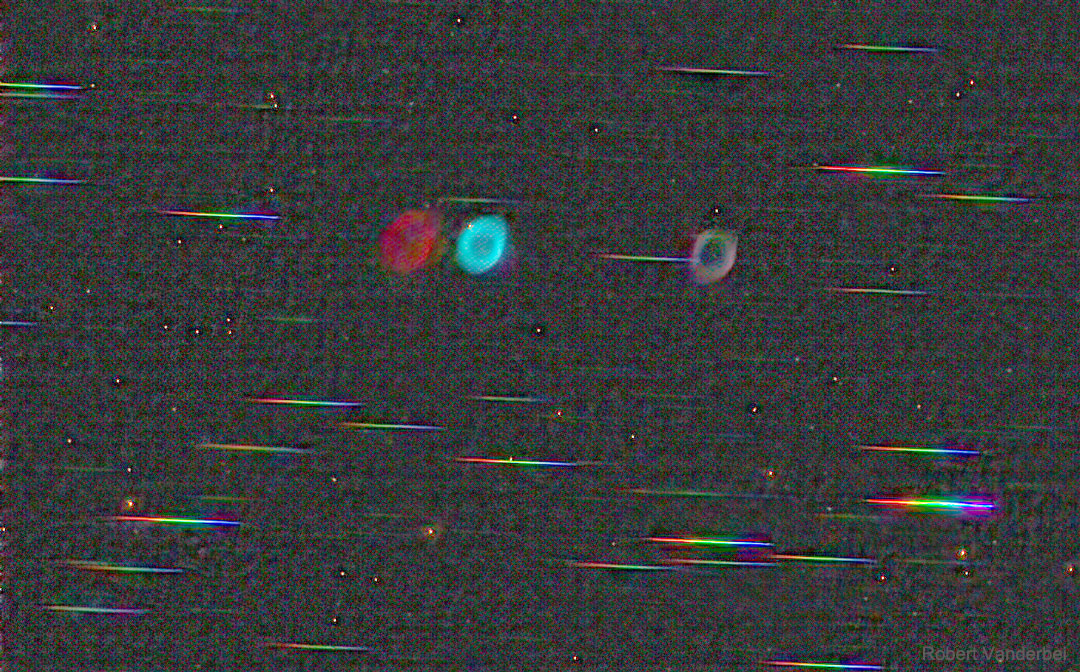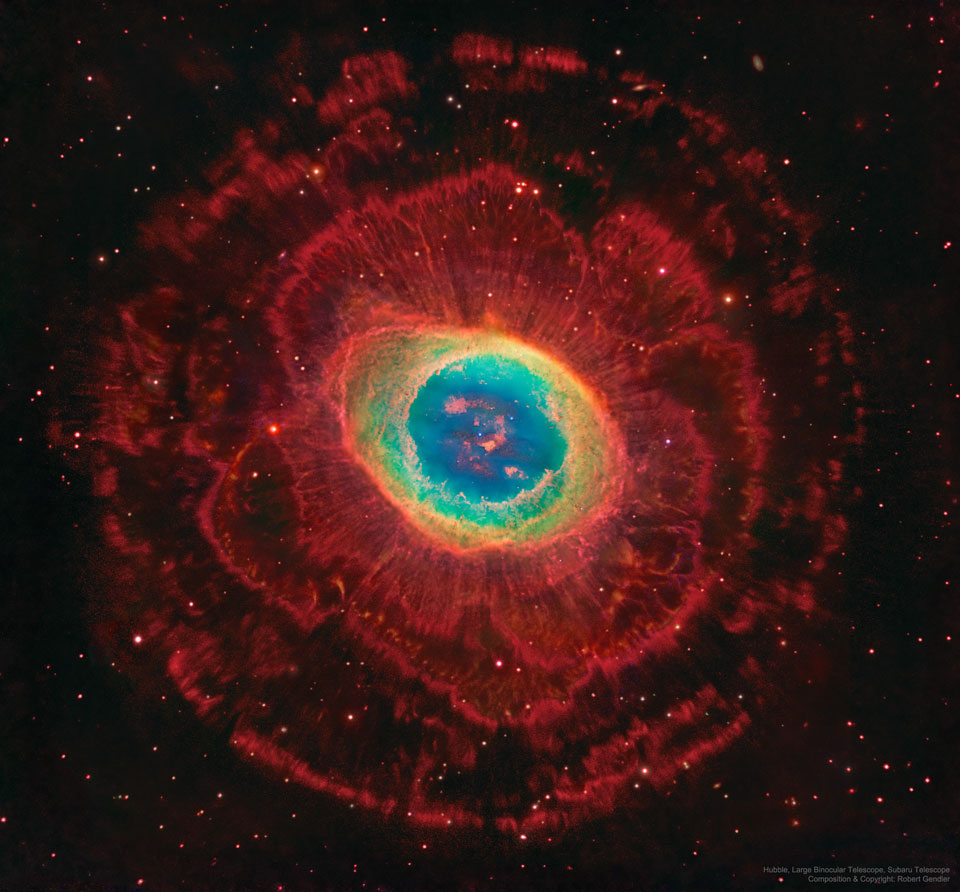2021年7月21日
Colors: Ring Nebula versus Stars
Image Credit: Robert Vanderbei (Princeton U.)
Explanation: What if you could see, separately, all the colors of the Ring? And of the surrounding stars? There’s technology for that. The featured image shows the Ring Nebula (M57) and nearby stars through such technology: in this case, a prism-like diffraction grating. The Ring Nebula is seen only a few times because it emits light, primarily, in only a few colors. The two brightest emitted colors are hydrogen (red) and oxygen (blue), appearing as nearly overlapping images to the left of the image center. The image just to the right of center is the color-combined icon normally seen. Stars, on the other hand, emit most of their light in colors all across the visible spectrum. These colors, combined, make a nearly continuous streak — which is why stars appear accompanied by multicolored bars. Breaking object light up into colors is scientifically useful because it can reveal the elements that compose that object, how fast that object is moving, and how distant that object is.
Tomorrow’s picture: open space
环状星云及附近恒星的色彩
影像提供: Robert Vanderbei (Princeton U.)
说明: 如果你的视力,能同时用不同的色彩,观看环状星云及周围的恒星,会见到什么?目前已经有科技能完成这项任务。这幅主题影像,就呈现透过这项类似稜鏡 绕射光栅的科技,观测环状星云(M57)和邻近恒星之所得。影像里,只见到寥寥数个环状星云的身影,因为它只在数个颜色发光。其中最明亮的色彩,为影像中左侧几乎重叠、分别来自氢 (红)和氧(蓝)的光。中右方的影像,则是所有色泽合并,为我们平常所见的环状星云。相较之下,恒星会发出可见光谱所有颜色的光。不同颜色的身影合起来,产生了几乎连续的光痕,而这也是为何恒星的附随影像是多色泽的棒形光痕。解析天体的光,科学上具有其实用性,因为可具之找出天体的化学元素、天体的移动有多快、以及天体有多远等。
明日的图片: open space



